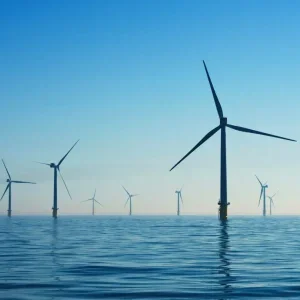The just published New Energy Outlook from Bloomberg New Energy Finance reveals a slew of startling figures that show an even more dramatic low-carbon transition than BNEF has projected in previous years.
The forecast sees solar energy costs dropping a further 66% by 2040, and onshore wind by 47%, with renewables undercutting the majority of existing fossil power stations by 2030.
Regarding investment, renewable energy sources such as solar and wind are set to take almost three quarters of the $10.2 trillion the world will invest in new power generating technology over the years to 2040,.
The result is a forecast showing earlier progress than its equivalent a year ago towards decarbonisation of the world’s power system – with global emissions projected to peak in 2026 and to be 4% lower in 2040 than they were in 2016. Coal demand will fade even in China and India.
“This year’s report suggests that the greening of the world’s electricity system is unstoppable, thanks to rapidly falling costs for solar and wind power, and a growing role for batteries, including those in electric vehicles, in balancing supply and demand,” said Seb Henbest, lead author of NEO 2017 at BNEF.
NEO 2017 is the result of eight months of analysis and modelling by a 65-strong team at BNEF. It is based purely on the announced project pipelines in each country, plus forecast economics of electricity generation and power system dynamics. It assumes that current subsidies expire and that energy policies around the world remain on their current bearing.
The highlights – New Energy Outlook 2017 foresees the following by 2040:
• $7.4 trillion to be invested in new renewable energy plants out of a total of $10.2 trillion to be invested in new power generation worldwide
• China and India to account for 28% and 11% of all investment in power generation
• Wind and solar to make up 48% of the world’s installed capacity and 34% of electricity generation
• Solar energy costs to drop a further 66%, onshore wind by 47%, and offshore wind levelized costs to drop by 71%
• Lithium-ion battery market for energy storage to be worth at least $239 billion
• Electric vehicles will account for 13% and 12% of electricity generation in Europe and the US respectively
• Sluggish demand, cheap renewables and coal-to-gas fuel switching to slash coal use by 87% in Europe; the U.S. will see 45% drop.
• Gas-fired power to see $804 billion in new investment and 16% more capacity
• Global emissions are projected to drop to 4% below 2016 levels. A further $5.3 trillion investment in 3.9TW of zero-carbon capacity would be consistent with keeping the planet on a 2-degrees-C trajectory.






